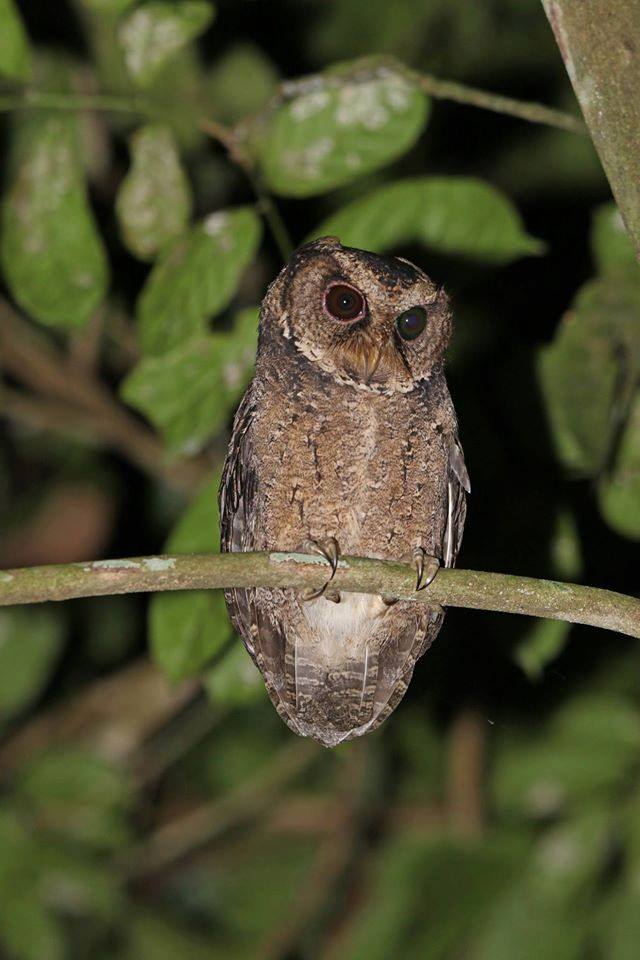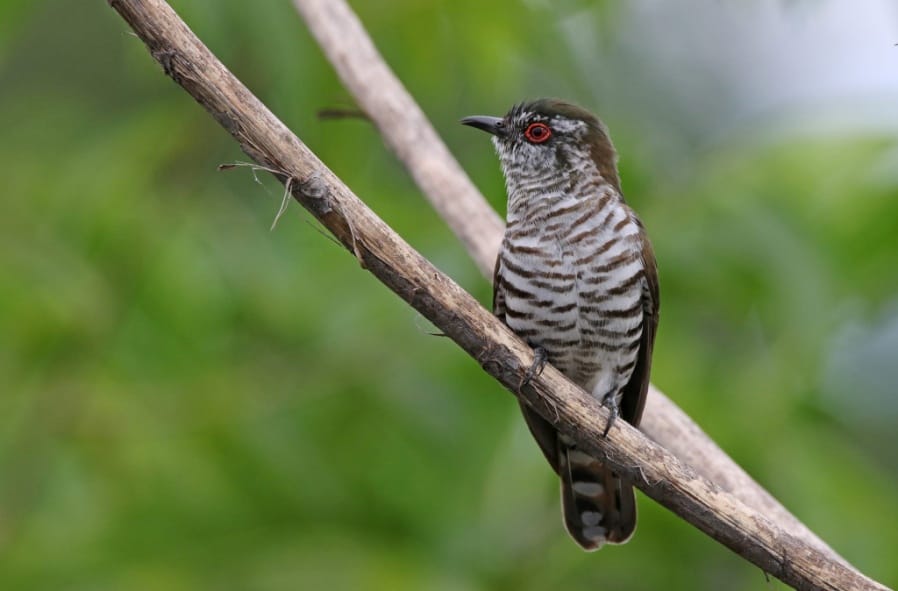by Pete Simpson
I am often asked “Why at the WBCP-Davao’s “First-Saturday” birdwatching at Malagos do I say “Brown-breasted Kingfisher” but when the list is published it is called “White-throated Kingfisher?” Here is my attempt to answer that question, and explain bird taxonomy with reference to the Kennedy guide and the birds of Mindanao.
Taxonomy is the science of classifying organisms and bird taxonomy is therefore the science of classifying birds. The Linnean system of classification, used for both plants and animals, was developed more than two centuries ago by the Swedish botanist Carolus Linnaeus. It is a hierarchical system where each organism belongs to a series of ranked taxonomic categories, such as a subspecies, species, genus, family, etc. At any rank in the hierarchy any organism can belong to only one taxon, or taxonomic group. For instance, the Philippine Eagle can be a member of only one genus and one class. Each taxon is given a formal, Latin-ised name that is recognized by scientists around the world. Nomenclature is a formal system of names used to label taxonomic groups.
Birds compose the class Aves, which is in the phylum Chordata (Chordata also includes mammals, reptiles, fishes, and tunicates.) The living members of the class Aves are placed into more than two dozen orders, such as the Passeriformes (perching birds), Piciformes (woodpeckers, etc.), and Columbiformes (pigeons and doves). The orders are divided into about 160 families.
Family names can be recognized because they all end in “idae.” For example, in the order Passeriformes are such families as the Monarchidae (the Monarchs) and the Laniidae (the shrikes). The Accipitriformes order includes the Accipitidae family that includes Hawks and some Eagles. The genus Pithecophaga has just one member, the Philippine Eagle.
Therefore, the scientific classification of Philippine Eagle is this:
Kingdom: Animalia
Phylum: Chordata
Class: Aves
Order: Accipitriformes
Family: Accipitridae
Genus: Pithecophaga
Species: Pithecophaga jefferyi
Because the Linnean system features a two-part specific name, it is often referred to as a system of “binomial nomenclature”. Traditionally, the scientific name is set in italic type, with the genus beginning with a capital letter.
Subspecies may be recognized with trinomial nomenclature by adding a third name to the specific name. Malagos is unusual in holding two recognised subspecies of Purple-throated Sunbird; Leptocoma sperata juliae with a yellow belly and the more widespread Leptocoma sperata trochilus with its red belly.
The scientific name of any bird is global. Philippine Eagle is always Pithecophaga jefferyi. The English name, also known as the common name, is not. A French speaker may call a Philippine Eagle Pithécophage des Philippines, a German speaker may call it Affenadler.
On publication of the Kennedy guide in the year 2000 it was simple, every bird had a binomial scientific name, some had a trinomial scientific name, but all species had just one English name. All birdwatchers in the Philippines used the Kennedy guide, its names, and its taxonomy. Things have got complicated since then.

The important level of taxonomy for birdwatchers is the species rank. Species are distinctly different kinds of organisms. I was taught the “biological species concept” at school, that birds of one species are, under most circumstances, incapable of interbreeding with individuals of other species. That seems to make sense. We know that Philippine Eagle is a different species from Purple-throated Sunbird, but things get less clear when comparing a Rufous Hornbill on Luzon to the Rufous Hornbill on Mindanao. They have long been recognized and classified as different subspecies, but some people now consider them as separate species and that would constitute a split.
And who are these “some people”? They are the people behind the taxonomic lists of birds of the world. That there are alternative lists, rather than just one list that everyone agrees on, is the crux of the problem for birdwatchers trying to keep up with bird names and taxonomy. There are a number of alternative taxonomic lists of birds of the world but to us the three most relevant lists are IOC, Clements, and HBW/Birdlife International.
The IOC (International Ornithological Congress) list is relevant to us because the Kennedy guide followed IOC and the Wild Bird Club of the Philippines (who are guardians of the Philippine List) follow IOC. The Clements list from the Cornell Lab of Ornithology is American, widely used and relevant to us as it is the basis of eBird, which is also American, and is now used by the WBCP to record bird sightings. The Handbook of Birds of the World/Bird Life International list is likely to become more influential to birdwatchers because they are carrying out an impressive number of splits recently, and it is important to the birds because this taxonomy is used in defining their conservation status. So three different list makers, each with a slightly different taxonomic philosophy, that is a slightly different definition of what constitutes a species, and therefore three different lists.
All three lists put the total number at a little over 10,500 different species in the world today.
When the Kennedy guide was published, the Philippine List stood at 572 species, of which around 170 were recognized as endemic to the Philippines. The latest Philippine List published by WBCP has 683 species of which 239 are endemic. All these numbers are following IOC taxonomy. Much has changed in the past 17 years and there are many more changes on the horizon. The total number of birds on the Philippine List has increased for a number reasons. The first is new birds being found in the Philippines, vagrants like the Australian Pelican in GenSan last year, or the unique case of the Calayan Rail which was unknown to science until its discovery in 2004.

The numbers of birds on the Philippine List increases as a species is split, usually as two or more forms previously recognized as different subspecies are elevated to full species status. The hand-written notes all over my field copy of the Kennedy guide are testament to the number of times this has happened, as is the large increase in the number of birds that are recognized as endemic to the Philippines. An example of this is the two forms of Metallic-winged Sunbird that were split to Luzon Sunbird and Bohol Sunbird, one species in to three. This split has been easy for us on Mindanao as we retain the original name and the split is recognized by Clements and IOC, making input to eBird easy.
Another reason I write over my Kennedy guide is when there has been a name change, for example Gould’s Bronze-Cuckoo in Kennedy, which is now called Little bronze Cuckoo. That wasn’t a split and it isn’t endemic, it was just a name change, though it is still a smart little bird.

Back to splits. Things get complicated when there is a difference in opinion between the taxonomic lists. IOC have White-throated Kingfisher as that, the non-endemic kingfisher that occurs elsewhere in Asia. The HBW/Birdlife taxonomic list have split the forms but retain the name White-throated Kingfisher for what is now a Philippine endemic. Clements have split the group and call our endemic species Brown-breasted Kingfisher.
So that is the answer to the original question “Why at the “First-Saturday” birdwatching at Malagos I say Brown-breasted Kingfisher but when the list is published it is called White-throated Kingfisher” with a brief and somewhat confusing explanation of taxonomy, names and lists.
I intent to revisit this article, to add more detail and probably make things more confusing. But for now, if you haven’t already, I recommend downloading the excellent “Kennedy Supplement” based on the WBCP 2016 Checklist by Christian Perez from here:
https://ebonph.wordpress.com/…/a-kennedy-supplement-based-…/
And the WBCP checklist in Excel format from here:
https://birdwatch.ph/html/checklist/checklist.html

Thanks for the article! I’m relatively new to birding…it was helpful…
Thanks for such a a well-written article Pete. And thanks for reviving my “2016 Kennedy Supplement”, which makes me want to prepare a 2018 update.